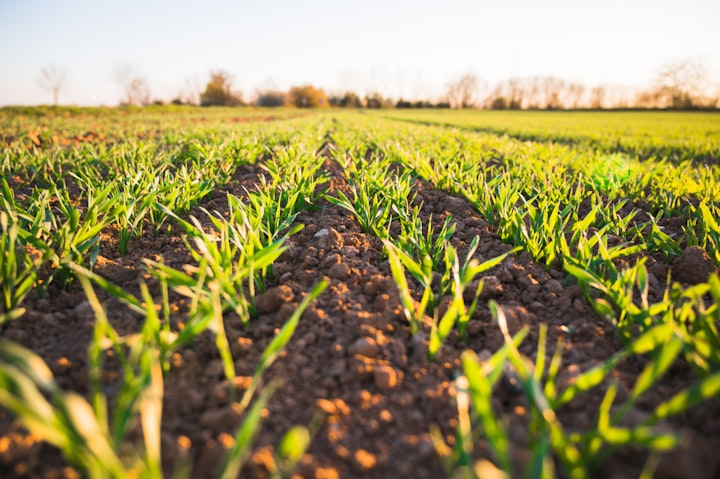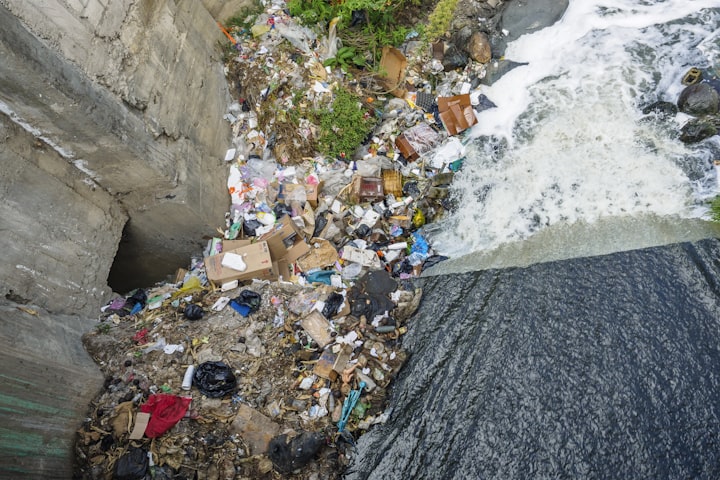We Take It For Granted: Our Soil
7 steps you can take to help

The question is: What can we do for our soil?
And also: What can our soil do for us?
It seems simple.
Plant a seed. Watch things grow. Well, normally it is simple. I watched tomatoes, multiple berries, fruits, carrots, potatoes, peas, and herbs grow in my garden this year. It is a beautiful sight. It truly is. Nothing better than a freshly picked tomato. Juicy and fresh, a burst of flavor. On the other hand, some things I planted did not grow. It happens every year.
Some things just do not grow. I wonder why. Cucumbers and eggplants for example. They did not seem to do well this year for some reason. My co-worker however brought in a ton of cucumbers to work. She lives 10 minutes from me, and somehow, her cucumbers did great this year. She had enough to share with everyone. She told me she did not do anything special, just plant and watch it grow. Same things with the trees and flowers some just do better than others. The main thing is that at least we have some things that do grow. Imagine, if we don’t, because we can not grow things anymore.
Soil is a mystery. When it works, it is wonderful. When it does not, it is a disaster.
Literally. No soil, no food. No food, no people.
Yet, we do not treat our soil well, we hurt it with awful chemicals that make the soil bare that things can not grow anymore. The same chemicals also slowly killing people by digesting the food. Causing cancers in our digestive systems.
We overwork our soil that causes killing the connections underneath the surface; together with the appropriate micro-nutrients and carbon needed to produce food and plants.
I watched a movie recently about our soil. Kiss the ground. In the movie, there is a lot of conversation about the soil and the things that can go wrong, and also about the things that can go right if we treat our soil well. Reversing climate change and carbon problems can be done with our soil, with the right way to treat our earth and animals (kisstheground.com, 2020). What a wonderful concept.
What is standing in our way?
Mistreating our soil and causing it to become a desert is not so great for our future on this planet. Let us look at some data. Based on data from the United Nations Food and Agriculture organization between 1997 and 2017 the CO2 emissions increased from 4,557,004 to 5,410,477 (CO2 eg. Gg) while the agricultural areas did not increase (FAO, 2020). So, we are emitting more CO2 by using the same land. It seems like whatever is being done does not work.
Based on Our World in Data which is a nonprofit data lab of the global change data lab (GCDL), Earth has 29% of the land that is usable. 71% of that land is habitable, the rest is barren (19%) or glaciers (10%). Of the 71% habitable land, half of it (50%) is used for agriculture the rest is for forests and shrubs and a small percentage is for infrastructure and freshwater.
What is this mean?
It means that we use most of our land for agriculture and it matters how that is done. The agricultural land is used mostly for animals while the protein we eat and need is mostly coming from plants. 77% of the area used for livestock produces 18% of our protein needs while 23% of crops provide 82% of our food and protein source (GCDL, 2020). This seems like a huge imbalance to me.
This basic statistic clearly shows that the land is misused and wasted. We could use the land to grow more produce, treat our animals kinder, reduce the amount of meat that is produced to be able to increase plant-based food production.
It is not enough just to change production but there is also a need to plant multiple plants to create biodiversity for the soil to be healthy (www.kisstheground.com, 2020). It is not simple, but it can be done.
We can create better soil, better air, and a healthier population for our future.
Happy soil equals happy people.
The question is what are every one of us willing to do?
Compost.
Plant a tree.
Raise animals grazing and rotating land.
Recycle.
Reuse.
Do not use harmful chemicals.
Be mindful.
What will you do for our soil? Whatever you be willing to do to help: I Thank You.
Gabriella
References
Kiss the ground. (2020) Retrieved from https://kisstheground.com
FAO (2020) Retrieved from http://faostat.fao.org/static/syb/syb_5000.pdf
GCDL (2020) Retrieved from https://ourworldindata.org/land-use
dancing Elephants Press. 2021. All rights Reserved.
About the Creator
Gabriella Korosi
I am a writer, public health professional, a nurse. Creator of connections, spreading positivity. Interests: health/spirituality/positivity/joy/caring/public health/nursing. My goal is to create positive change.https://gabriellakorosi.org






Comments
There are no comments for this story
Be the first to respond and start the conversation.